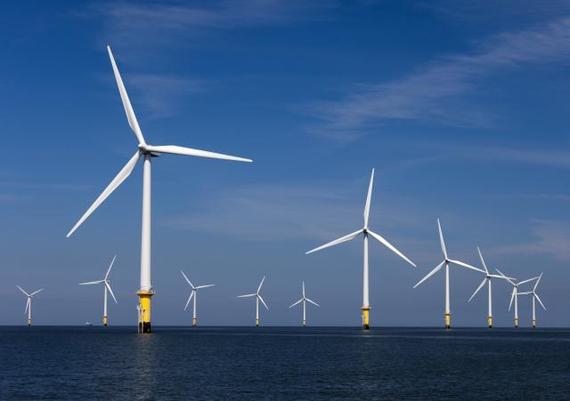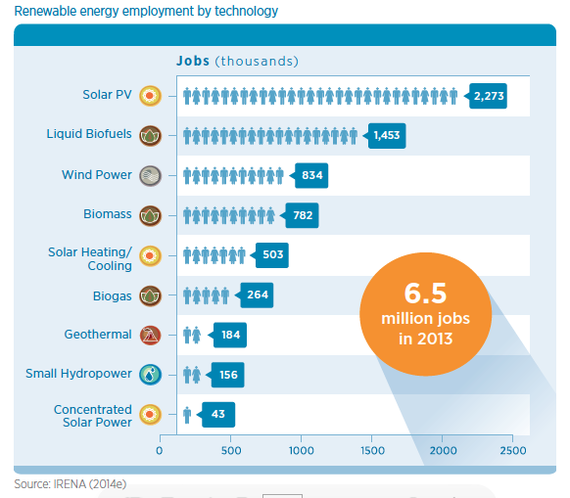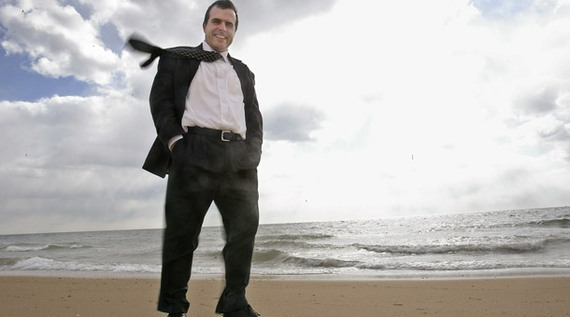Cape Wind, North America's first offshore wind farm, will soon install 130 windmills off the coast of southeastern Massachusetts to provide roughly three-quarters of the electricity required by the residents of Cape Cod, Martha's Vineyard, and Nantucket.
The landmark project has been fourteen years in the making. By comparison, 224 offshore wind turbines were fully grid connected in Europe in just the first six months of 2014. European waters are home to 64 operational offshore wind farms in an industry that employs 58,000 people. European Wind Energy Association CEO Justin Wilkes confirms that offshore wind "remains the fastest growing power sector in Europe" and Germany's ambitious offshore wind initiatives have led many experts to conclude that doubling worldwide renewable energy generation by 2030 is realistic.

European Wind Farm Photo Courtesy: Siemens and Cape Wind
By 2020, fifty percent of Americans are expected to live directly by the coast. Along the northeast shoreline, where urban populations are dense, America benefits from some of the greatest offshore wind reserves in the world. From New England to North Carolina, the technology required to convert the wind to clean electricity, and then deliver the power to coastal residents, is becoming increasingly scalable.
So, with such an abundance of inexhaustible, clean power just waiting to be tapped, why has the U.S. delayed its development of offshore wind power?
A Generation of Preparation
In 2001, when I first read of Cape Wind's plans to harness the brisk winds of Nantucket Sound to supply 360 megawatts (MW) of electricity to Cape Cod residents, my son, now in his freshman year of college, was just beginning preschool in Dallas. It was when young children were still invited by pilots to sit in the cockpit of a commercial plane and pose for photos wearing the Captain's hat, an oversized headset, and the airline's logo pin. Yes, it was before the national heartbreak of 9-11, before the wars in Afghanistan and Iraq and before the subsequent Great Recession of 2008. It was before NASA scientists began publicly reporting the rapid melt of the polar ice caps and before the Pentagon concluded that climate change presented a threat at least as great as terrorism. It was before 100,000 gallons of bunker oil spilled in Cape Cod's Buzzard's Bay and it was before BP's catastrophic malfeasance in the Gulf of Mexico.
It's been a long time
It's fairly well known that through Cape Wind's long and determined journey, well-funded fossil fuel interests have challenged the project with schemes to dismiss the project's integrity and to contrive any number of weightless objections to the America's first commercial-scale offshore wind farm. For example, among the opposition's many failed efforts to discredit Cape Wind, when much of Europe was busy building the clean energy infrastructure that would sustain their economies long-term, was a feigned concern for migratory birds. The Mass Audubon Society surprised the opposition by publicly supporting Cape Wind and cited sources of bird deaths (including the burning of coal) far more controversial than windmills. Nevertheless, the opposition to Cape Wind continued to confound the public's understanding of clean energy's mighty potential by using many millions of dollars in "dark money" donations to cast doubt on all forms of renewable energy and on the science of climate change. Why? Because with access to the wind and the sun, and the technologies required to convert them to clean, emissions-free energy, who needs fossil fuels?

Image Courtesy of U.S. News & World Report
Since Cape Wind's detractors are motivated by profits, rather than an affinity for wildlife or the long-term sustainability of the planet, it's hard to reconcile how spinning sea breezes into clean electricity could actually become as contentious of an issue as it has here in the U.S. over the past fourteen years. But here's the key: project opponents have long understood that human nature resists change, even when its clearly articulated benefits outweigh its perceived risks.
Behavioral change therapist Carol Kinsey Goman writes in Forbes that human beings avoid change primarily because the challenge to process new information stimulates our "flight or fight" response. In other words, we simply prefer what is familiar because it's less stressful than having to analyze new information, even if that information delivers a simple and persuasive message.
Cape Wind's well-funded detractors have designed, funded, and deployed strategic campaigns designed to prey on this innate, hard-wired aspect of human nature. Their message has been simple--harnessing the wind to make clean electricity is just "too complicated and/or too unreliable." What they don't reveal, of course, is just how popular and successful wind power has been abroad. An International Renewable Energy Agency (IRENA) report estimates that as of 2013, there are currently over 800,000 jobs in the wind industry worldwide.
The well-honed and oft repeated bite-size negative messaging of wind power "doubters" (a.k.a. the fossil fuel lobby) has played well to our collective desire for predictability and consistency--that is, until recently.
As the price of renewable energy has dropped precipitously over the past fourteen years, wind power has enjoyed increasing public backing. Just last month, energy expert and writer Silvio Marcacci reported in CleanTechnica that a bi-partisan survey revealed 87 percent of the poll's respondents support wind power for three major reasons: 1) employment opportunities; 2) energy independence; and 3) national security benefits. And according to a 2014 Navigant poll, 72 percent of Americans support more wind power development.
Public opinion surveys on Cape Wind have found strong statewide support for the project, which also enjoys the endorsement of Massachusetts Governor Deval Patrick. Earlier this month, at a Boston press conference, the Governor declared:
"Massachusetts intends to become the hub of the offshore wind industry emerging along the east coast of the United States."
Additionally, Cape Wind has the support of the Massachusetts State House and among the Commonwealth's congressional delegation in Washington. In Part three of this series, MA Representative William Keating from Massachusetts's 9th District shares his optimism for "Massachusetts-made wind power." Stay tuned!
So, despite the tedious and tenacious opposition to America's first offshore wind farm, Cape Wind is gearing up to install its first steel beam in 2015. Cape Wind is tenacious too. It has won an impressive string of 26 legal victories in which a judge recently described litigious project opponents as an "obdurate band" that were engaged in a "vexatious abuse of the democratic process."
The Obama Administration has been very supportive of offshore wind in general, and of Cape Wind, in particular. The U.S. Interior Department approved Cape Wind, concluding a ten-year permitting review, and on July 1, 2014, the Department of Energy announced a $150 million dollar loan guarantee to assist the financing of the project.
So, as Cape Wind begins installing its foundations in 2015 (adding the wind turbines in 2016 and commissioning the project in 2017), Cape Cod and the country will have entered a new generational landscape--one defined by an awareness of climate change reality, a rapidly growing public demand for clean energy solutions, and the desire to embrace change because the outdated energy model of the 20th century--with all of its social and environmental costs--simply isn't working anymore.
Could energy in America be growing up?
Cape Wind's Communications Director, Mark Rodgers, thinks so:
"I would say that there's tremendous value in having America's first-in-the-nation offshore wind installation located in Nantucket Sound. It's an area of the country--like so many others--that is faced with great challenges, but because of our access to an abundant clean energy supply, it holds even greater opportunities that can help preserve our environment and way of life for generations."
Part two of this story on Cape Wind's historic evolution focuses on an up close and personal interview with Mark Rodgers, who, along with Cape Wind's President, Jim Gordon, has been the public face of the company for nearly a generation.


